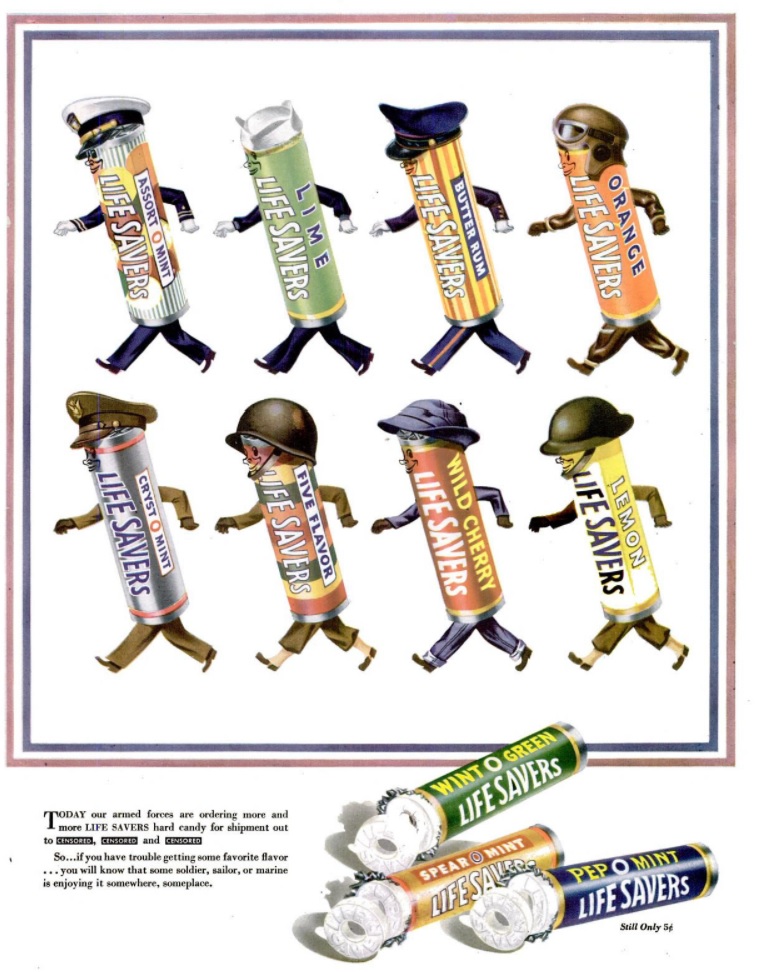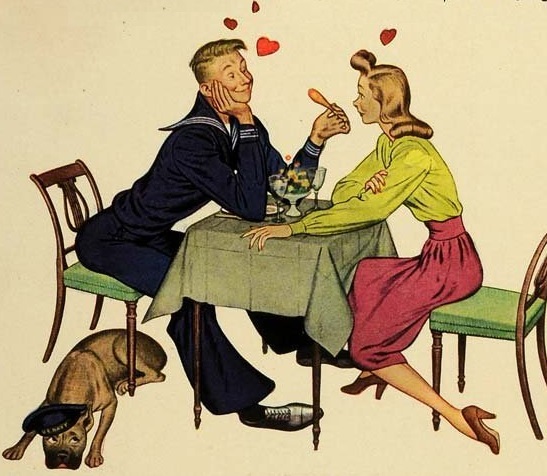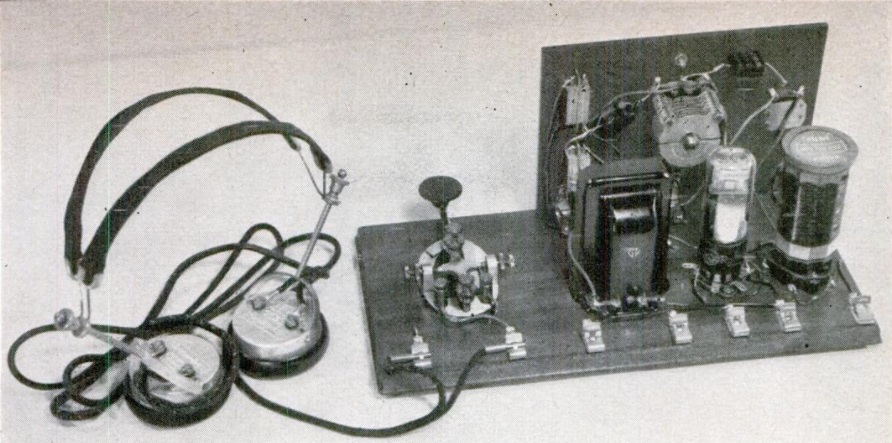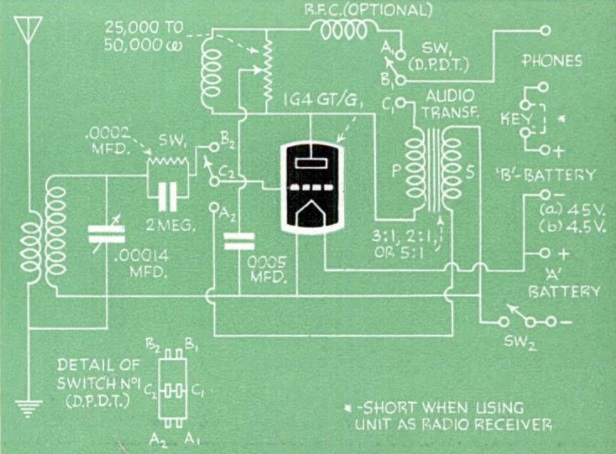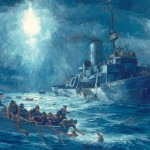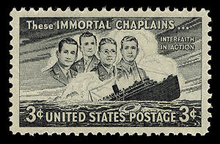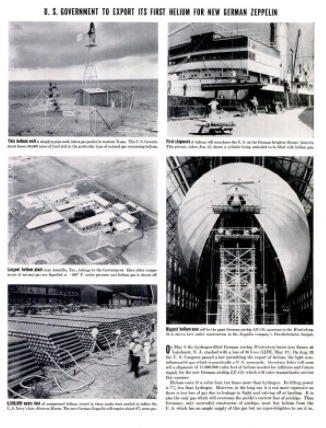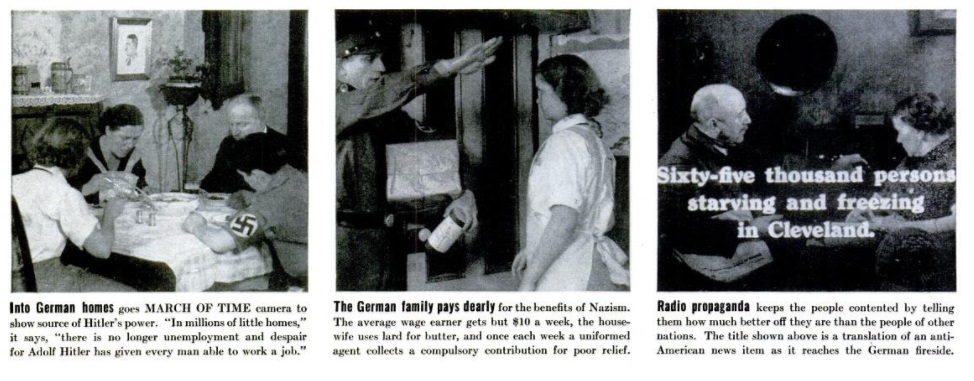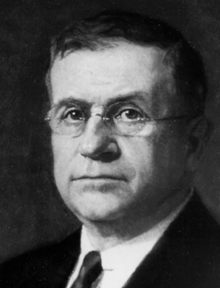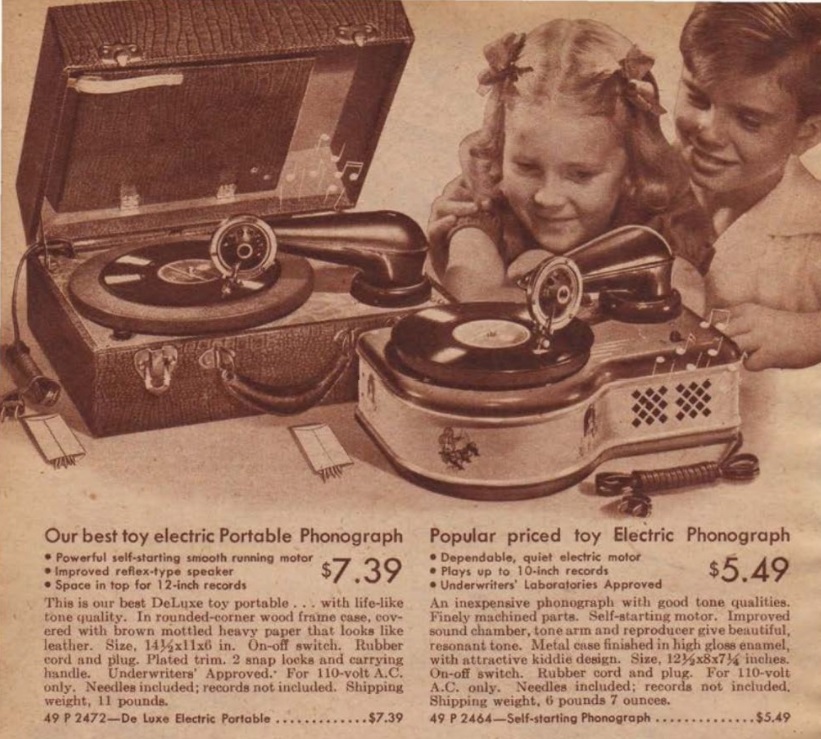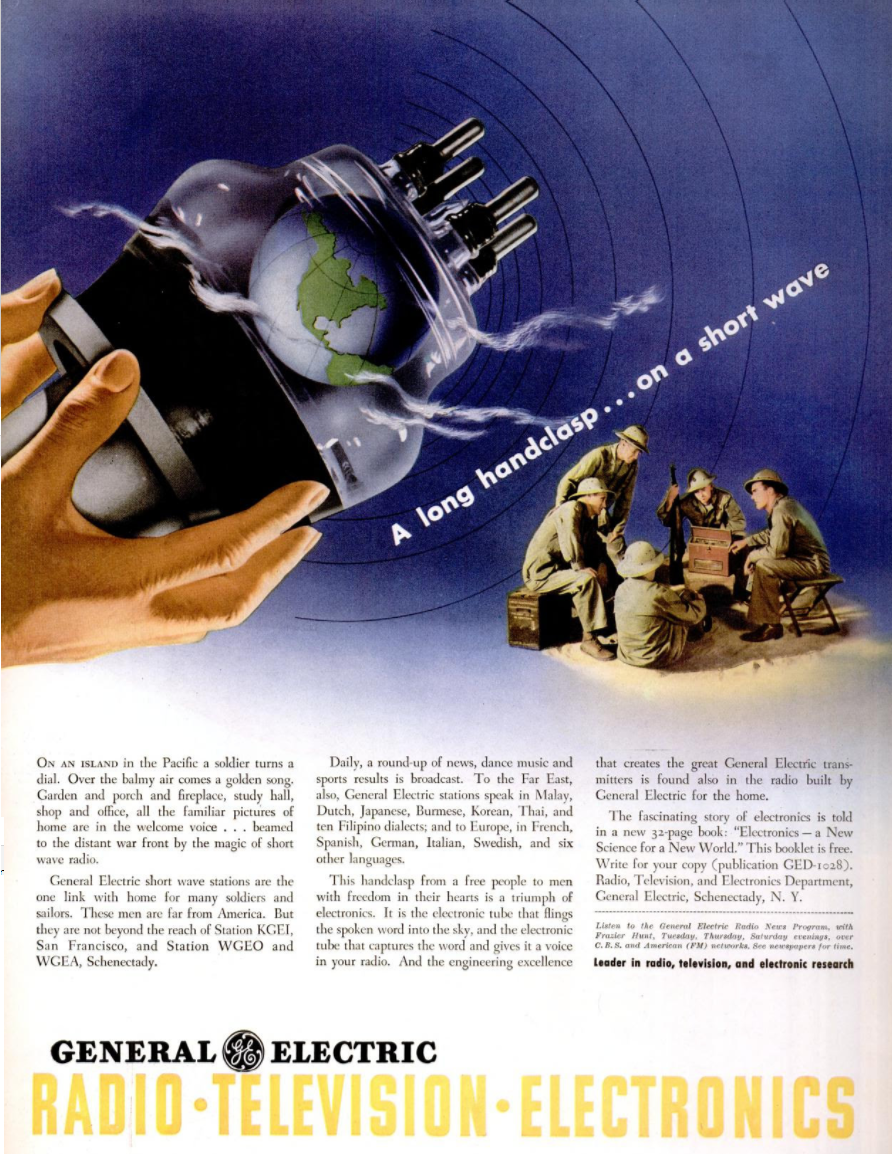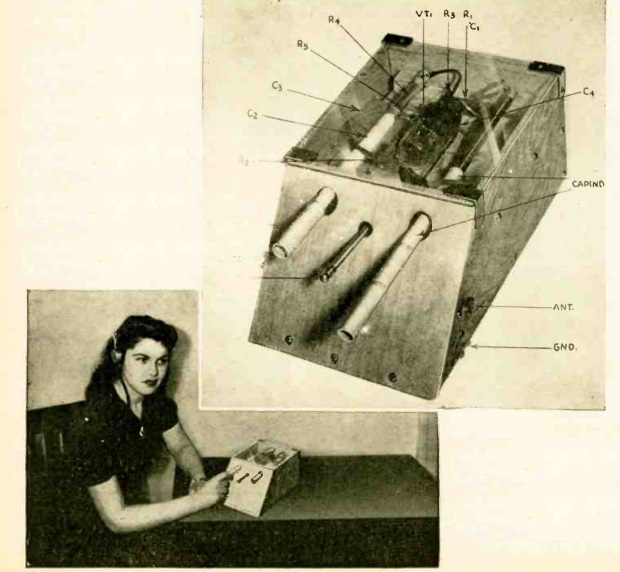
The January 1943 issue of Radio Craft magazine contained the plans for no less than three one tube receivers, the first of which is the unusual looking set shown above, dubbed by the magazine as the “Simplicity 1.”
In addition to being designed around the concept of simplicity, the set dealt with parts shortages. In particular, variable capacitors were hard to come by. Therefore, tuning was accomplished with a “capind,” a component which combined capacity plus inductance. In other words, it was a combined variable capacitor and variable inductor, all in one component.
The “capind” consisted of a coil carefully wound over a wooden dowel, covered by an extremely thin paper sleeve. That was covered by a piece of tin foil, which served as the capacitor. The assembly is shown below:
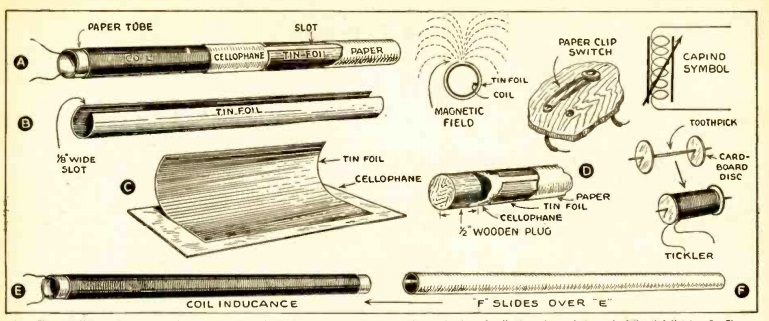
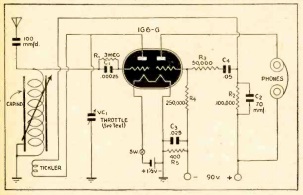 The set was regenerative, and the young woman in the photo above is adjusting the regeneration by adjusting the “throttle” condenser, which is a homemade tubular capacitor.
The set was regenerative, and the young woman in the photo above is adjusting the regeneration by adjusting the “throttle” condenser, which is a homemade tubular capacitor.
With the use of these homemade parts, the cost of the set (not including 1G6G tube and batteries) was said to be less than a dollar.
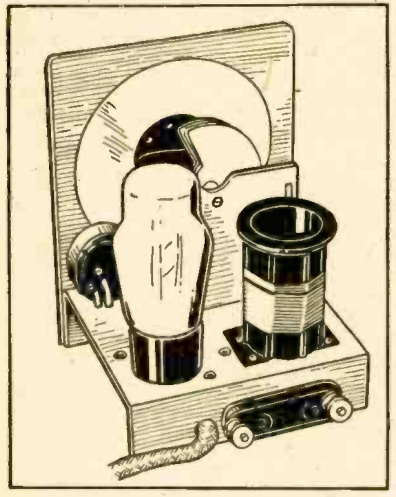 The second set featured by the magazine, shown at right, is slightly more advanced, contains a conventional tuning capacitor, and was capable of tuning the short wave bands through the use of four plug-in coils.
The second set featured by the magazine, shown at right, is slightly more advanced, contains a conventional tuning capacitor, and was capable of tuning the short wave bands through the use of four plug-in coils.
This set employed the same 1G6G tube, and used a variable resistor to adjust regeneration. The use of a 35-75 foot antenna was recommended.

Finally, in response to requests by “several readers,” the magazine reprinted the schematic of the “Pigmy Receiver” which had originally appeared in the magazine’s June 1940 issue. This set used a single 117L7, one half of which served as rectifier, with the other half serving as detector.
You will note that only one wire is connected to the line cord, which the magazine describes as a “Safety First” method of plugging it in. The other power connection is through the thoroughly grounded chassis. With the cord plugged in the wrong way, the set would not light. Of course, this circuit would trip a modern ground fault interrupter circuit, but it would be a relatively safe way of operating a radio directly off the line current.
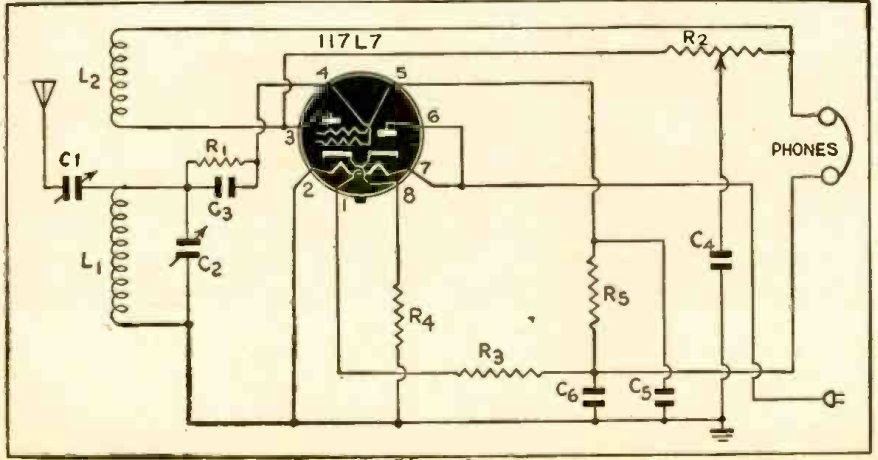
 Today marks the 75th anniversary of the beginning of production of the 1943 steel U.S. cent coin on February 23, 1943.
Today marks the 75th anniversary of the beginning of production of the 1943 steel U.S. cent coin on February 23, 1943.

